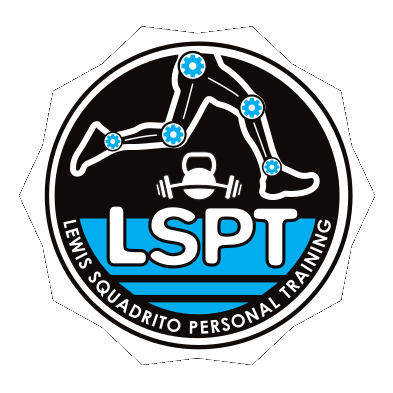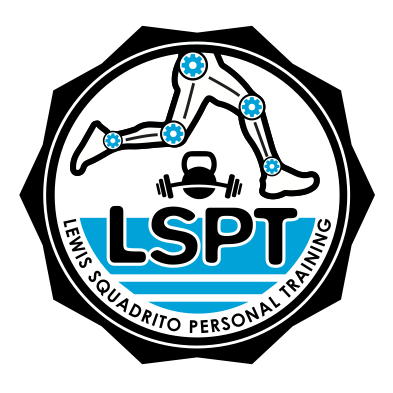Introduction:
Super-compensation is a pivotal concept in exercise science, highlighting how the body recovers and adapts after a workout. This article explores super-compensation across various workout types for runners, addressing differences between beginners and elite athletes, and examines the impact of double workouts and insufficient recovery on this process.
The Cycle of Super-Compensation in Athletic Training:
Initial Workout – The Stimulus Phase:
- The cycle begins when an athlete engages in a workout. This session serves as a stimulus that challenges the athlete’s current fitness level. Depending on the type of training, this could be a session focused on strength, endurance, speed, or another specific skill.
- The workout intentionally creates a controlled amount of stress on the body. For muscles, this can mean microscopic tears, acute inflamitory responsis and contractile failure. For the cardiovascular system, an increased demand for O2 or an increased demand for CO2 tolerance and for energy systems, depletion of stored fuels.
Post-Workout – The Recovery Phase:
- Immediately after the workout, the body enters a recovery phase. This phase is crucial as it is when the body starts to repair and rebuild itself.
- Recovery involves physiological processes that repair muscle tissue, replenish energy stores, and remove metabolic waste products. Adequate nutrition, hydration, and rest are essential during this phase to facilitate effective recovery.
- This phase is not just about physical recovery but also psychological recovery, allowing the athlete to mentally recuperate from the stress of the workout.
Adaptation – The Super-Compensation Phase:
- Following recovery, the body enters the super-compensation phase. Here, the body doesn’t just recover to its pre-workout state but adapts to a higher level of performance.
- In anticipation of future stress similar to the initial workout, the body enhances its muscle strength, cardiovascular efficiency, or energy storage capacity. For instance, muscles grow stronger and more resilient, and the heart becomes more efficient at pumping blood.
- The duration of this phase can vary based on the workout’s intensity, the athlete’s fitness level, and their recovery strategies.
Timing the Next Workout:
- The key to maximizing super-compensation is timing the next workout at the peak of this phase. If the next workout is too soon, the body hasn’t fully recovered or adapted, leading to potential fatigue and increased injury risk.
- Conversely, if the workout is too late, the benefits of super-compensation may start to diminish, and the body may return to its baseline state.
- Finding the optimal time for the next workout is crucial and can depend on various factors, including the athlete’s experience and the specific demands of their sport. If you have ever wondered why, despite your best efforts, countless training sessions and early mornings, you just don’t seem to improve, or you even find yourself becoming worse, mistiming the next workout is often the culprit.
Repeating the Cycle:
- Once the next workout is completed at this optimal time, the cycle begins anew. Each cycle aims to progressively build the athlete’s abilities.
- Over time, this leads to significant improvements in fitness and performance, as the body continually adapts to higher levels of stress and recovers more efficiently
Super-Compensation in Running Workouts:
Super-compensation varies based on the type of running workout, the desired stimulus or training signal and the athlete’s training level:
Pure Speed & Max Velocity:
- Beginner: 5-7 days
- Highly Trained: 48-72 hours
Speed Endurance Workouts:
- Beginner: 4-7 days
- Highly Trained: 3-5 days
Note: Contextualized to submaximal efforts for durations between 30-60sec with full recovery. Event specific speed endurance workouts will have different super compensation timelines based of the event and the athlete.
VO2max Workouts:
- Beginner: 7-9 days
- Highly Trained: 5-7 days
Note: The duration of the super-compensation cycle following VO2 max workouts is significantly influenced by the total volume of high intensity running involved. While the mentioned recovery times are the minimum effective periods needed between specific VO2 max sessions, it’s crucial to note that if a workout is particularly intense, with substantial volume and minimal rest, the body’s recovery and adaptation phase can extend considerably. In such cases, the super-compensation cycle can take up to 35 days to complete. This highlights the importance of tailoring recovery time to the workout’s intensity, emphasizing the need for athletes to monitor their responses to high-volume training and adjust their recovery periods to prevent premature retraining, potential injury, or overtraining.
Lactate Threshold Workouts:
- Beginner: 4-6 days
- Highly Trained: 48-72 hours
Tempo Runs:
- Beginner: 3-5 days
- Highly Trained: 1-3 days
Aerobic Interval Workouts:
- Beginner: 3-5 days
- Highly Trained: 2-4 days
Long Runs:
- Beginner: 5-7 days (sometimes more depending on length and elevation)
- Highly Trained: 3-5 days
Hill Interval Workouts:
- Beginner: 4-7 days
- Highly Trained: 3-5 days
When designing a training plan based on the principles of super-compensation, runners need to carefully structure their workouts to avoid consecutive days of similar stimuli, as this can negate the benefits of each session. An effective approach is to ensure that the training plan alternates between different types of workouts, taking into account the stress and load on joints.
For instance, a runner could adopt a three-day cycle: initiating with a high-intensity workout like speed, speed endurance, or hill training on the first day, followed by a session focused on tempo, threshold, or aerobic intervals on the second day, and then an easy or recovery run on the third day.
This approach ensures varied stimulus, aiding in optimal recovery and super-compensation. The cycle can then be repeated for the remainder of the week, culminating in a rest day to allow for full recovery and adaptation. Such a plan allows for continuous training while respecting the body’s need for varied stimuli and adequate recovery, aligning with the concept of super-compensation to enhance performance and minimize the risk of overtraining or injury.
Super-Compensation Across Varied Workout Types:
Super Compensation is not just specific to your running workouts. It applies across all workouts and exercise.
Plyometric Training:
- Beginners: 5-7 days
- Elite: 2-5 days
Circuit Training:
- Beginners: 3-5 days
- Elite: 2-3 days
HIIT:
- Beginners: 4-6 days
- Elite: 2-4 days
Mobility and Flexibility Workouts:
- Beginners: 2-3 days
- Elite: 1-2 days
Strength Training:
- Beginners: 5-7 days
- Elite: 48-72 hours
Hypertrophy Training:
- Beginners 5-7 days
- Elite 3-5 days
Isometric Training
- Beginners 2-4 days
- Elite 24-48 hours
Balance and Stability Training:
- Beginners 2-4 days
- Elite 12-72 hours
Recovery Workouts:
- Beginners 24 hours
- Elite 6-24 hours (depending on length)
Factors Influencing Super-Compensation:
The duration and effectiveness of super-compensation are influenced by training intensity, volume, nutrition, and recovery strategies.
The Concept of Double Workouts:
Performing two intense workouts in one day, like double threshold runs, affects super-compensation:
- Increased Body Stress: More stress and strain on the body.
- Shortened Recovery Time: Less time for recovery between workouts.
- Altered Super-Compensation Phase: Recovery and adaptation could be delayed or extended, but yield greater results.
- Risk of Overtraining: Regular intense double workouts can lead to fatigue and injury if not managed correctly.
- Nutrition and Hydration Needs: Increased demands for fuel and fluids.
- Importance of Monitoring and Adjustment: Individual responses vary.
- Potential Benefits: Managed well, they can enhance endurance and performance.
Implementing Super-Compensation in Training:
- Listen to Your Body: Tailor training based on personal responses. Keep a training log including details on how the workout felt during and after.
- Balance Training and Recovery: Prioritize rest and nutrition. Just because a workout is “planned” for a given day doesn’t mean you can’t adjust. Push it back a day, Modify it, even skip it. Its better to be slightly under cooked than it is to be burned out.
- Consult Professionals: Get advice for customized training plans. Consider a professional with a multi disciplined approach. One that understands the intricacies of running specific training, strength training and recovery modalities. Not just running.
The Risks of Insufficient Recovery:
When athletes repeat workouts too quickly without allowing for adequate super-compensation, several negative consequences can arise:
- Counterproductive Training: Without sufficient recovery, the body doesn’t have the chance to fully adapt and strengthen from the previous workout. This can lead to a state where subsequent workouts are less effective, or even detrimental, to fitness and performance goals. This is where the saying “too much of a good thing” or “less is more” comes into play!
- The ‘Well’ Analogy: Repeating workouts too quickly can be likened to digging oneself into a ‘well.’ Each workout stresses the body, and without proper recovery, the athlete goes deeper into the ‘well’ of fatigue, making it harder to climb back to peak performance levels.
- Diminishing Returns: Athletes may experience diminishing returns on their efforts. Instead of improving, they might find their performance stagnating or even declining.
- Increased Risk of Burnout and Overtraining: Constantly training without adequate recovery can lead to burnout, characterized by physical and mental exhaustion. It can also contribute to overtraining syndrome, where prolonged recovery is needed to return to normal function.
- Higher Likelihood of Injury: Fatigued muscles and joints are more susceptible to injuries. Repeated stress without recovery increases the risk of both acute injuries and overuse injuries.
Conclusion:
Understanding super-compensation is vital for athletes at all levels. By comprehending how different workouts impact the body’s recovery and adaptation process, athletes can better plan their training for maximum efficiency and performance gains. Recognizing the signs of inadequate recovery and avoiding the pitfalls of repeated workouts without sufficient rest are crucial for long-term success and health in any training regimen.


